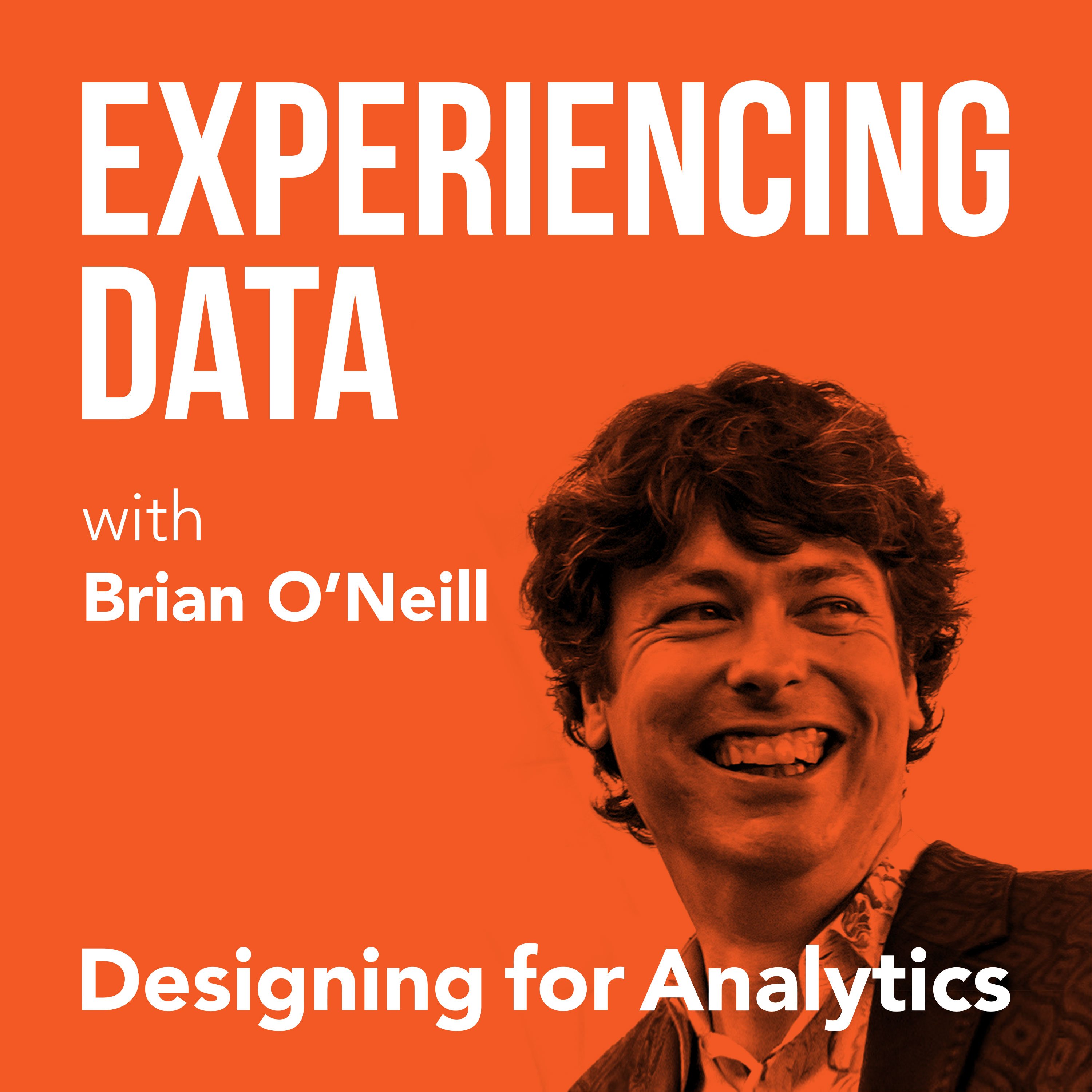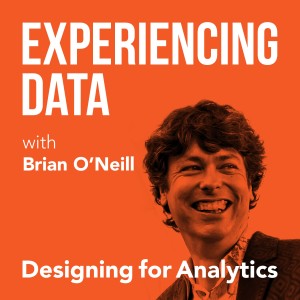

154K
Downloads
184
Episodes
Is the value of your enterprise analytics SAAS or AI product not obvious through it’s UI/UX? Got the data and ML models right...but user adoption of your dashboards and UI isn’t what you hoped it would be?
While it is easier than ever to create AI and analytics solutions from a technology perspective, do you find as a founder or product leader that getting users to use and buyers to buy seems harder than it should be?
If you lead an internal enterprise data team, have you heard that a ”data product” approach can help—but you’re concerned it’s all hype?
My name is Brian T. O’Neill, and on Experiencing Data—one of the top 2% of podcasts in the world—I share the stories of leaders who are leveraging product and UX design to make SAAS analytics, AI applications, and internal data products indispensable to their customers. After all, you can’t create business value with data if the humans in the loop can’t or won’t use your solutions.
Every 2 weeks, I release interviews with experts and impressive people I’ve met who are doing interesting work at the intersection of enterprise software product management, UX design, AI and analytics—work that you need to hear about and from whom I hope you can borrow strategies.
I also occasionally record solo episodes on applying UI/UX design strategies to data products—so you and your team can unlock financial value by making your users’ and customers’ lives better.
Hashtag: #ExperiencingData.
JOIN MY INSIGHTS LIST FOR 1-PAGE EPISODE SUMMARIES, TRANSCRIPTS, AND FREE UX STRATEGY TIPS
https://designingforanalytics.com/ed
ABOUT THE HOST, BRIAN T. O’NEILL:
https://designingforanalytics.com/bio/
Episodes

Tuesday Oct 14, 2025
180 - From Data Professional to Data Product Manager: Mindset Shifts To Make
Tuesday Oct 14, 2025
Tuesday Oct 14, 2025
In this episode, I’m exploring the mindset shift data professionals need to make when moving into analytics and AI data product management. From how to ask the right questions to designing for meaningful adoption, I share four key ways to think more like a product manager, and less like a deliverables machine, so your data products earn applause instead of a shoulder shrug.
Highlights/ Skip to:
- Why shift to analytics and AI data product management (00:34)
- From accuracy to impact and redefining success with AI and analytical data products (01:59)
- Key Idea 1: Moving from question asker (analyst) to problem seeker (product) (04:31)
- Key Idea 2: Designing change management into solutions; planning for adoption starts in the design phase (12:52)
- Key Idea 3: Creating tools so useful people can’t imagine working without them. (26:23)
- Key Idea 4: Solving for unarticulated needs vs. active needs (34:24)
Quotes from Today’s Episode
“Too many analytics teams are rewarded for accuracy instead of impact. Analysts give answers, and product people ask questions.The shift from analytics to product thinking isn’t about tools or frameworks, it’s about curiosity.It’s moving from ‘here’s what the data says’ to ‘what problem are we actually trying to solve, and for whom?’That’s where the real leverage is, in asking better questions, not just delivering faster answers.”
“We often mistake usage for success.Adoption only matters if it’s meaningful adoption. A dashboard getting opened a hundred times doesn’t mean it’s valuable... it might just mean people can’t find what they need.Real success is when your users say, ‘I can’t imagine doing my job without this.’That’s the level of usefulness we should be designing for.”
“The most valuable insights aren’t always the ones people ask for.
Solving active problems is good, it’s necessary. But the big unlock happens when you start surfacing and solving latent problems, the ones people don’t think to ask for.Those are the moments when users say, ‘Oh wow, that changes everything.’That’s how data teams evolve from service providers to strategic partners.”
“Here’s a simple but powerful shift for data teams: know who your real customer is.
Most data teams think their customer is the stakeholder who requested the work…
But the real customer is the end user whose life or decision should get better because of it.
When you start designing for that person, not just the requester, everything changes: your priorities, your design, even what you choose to measure.”
Links
- Need 1:1 help to navigate these questions and align your data product work to your career? Explore my new Cross-Company Group Coaching at designingforanalytics.com/groupcoaching
- For peer support: the Data Product Leadership Community where peers are experimenting with these approaches. designingforanalytics.com/community
No comments yet. Be the first to say something!